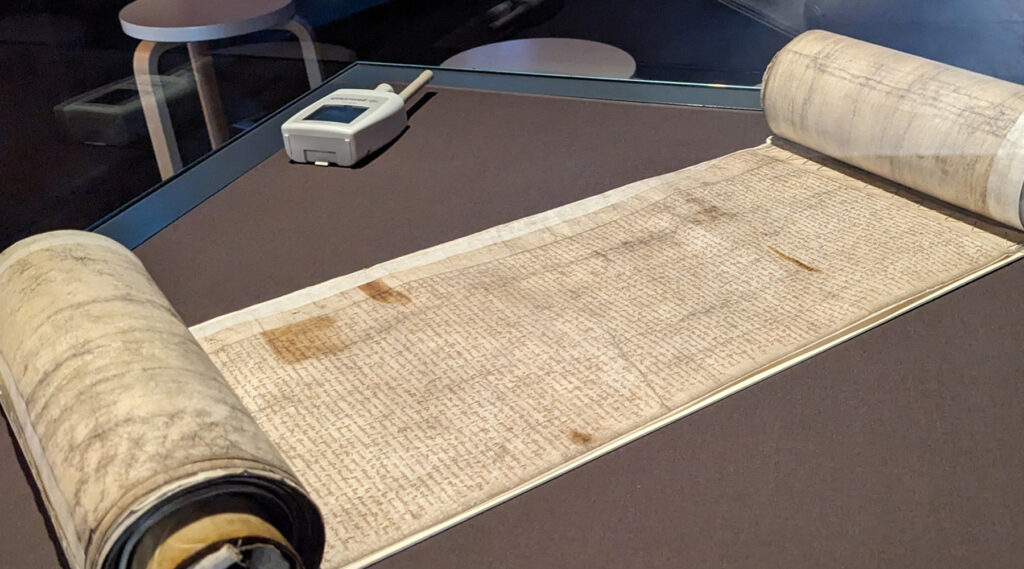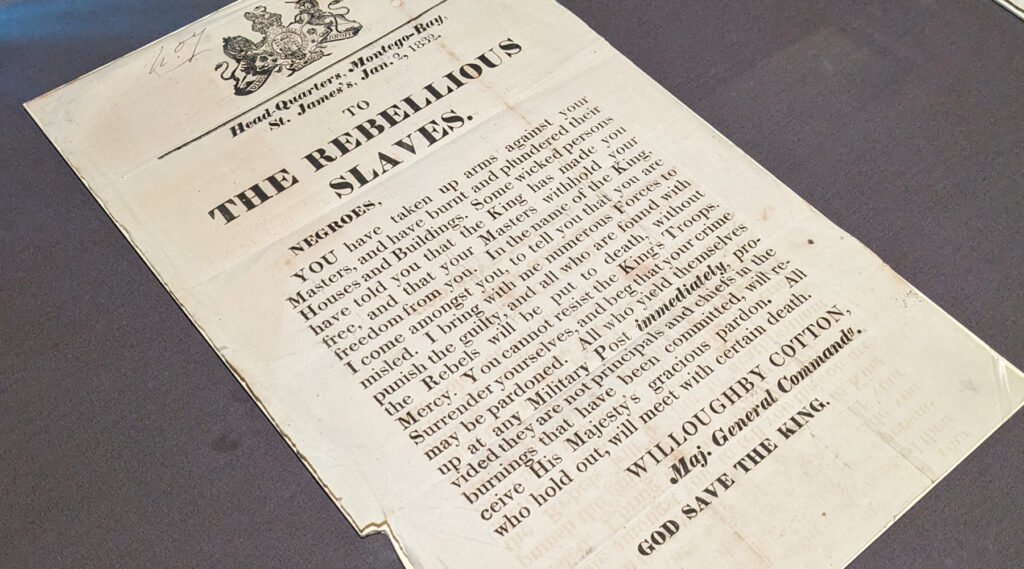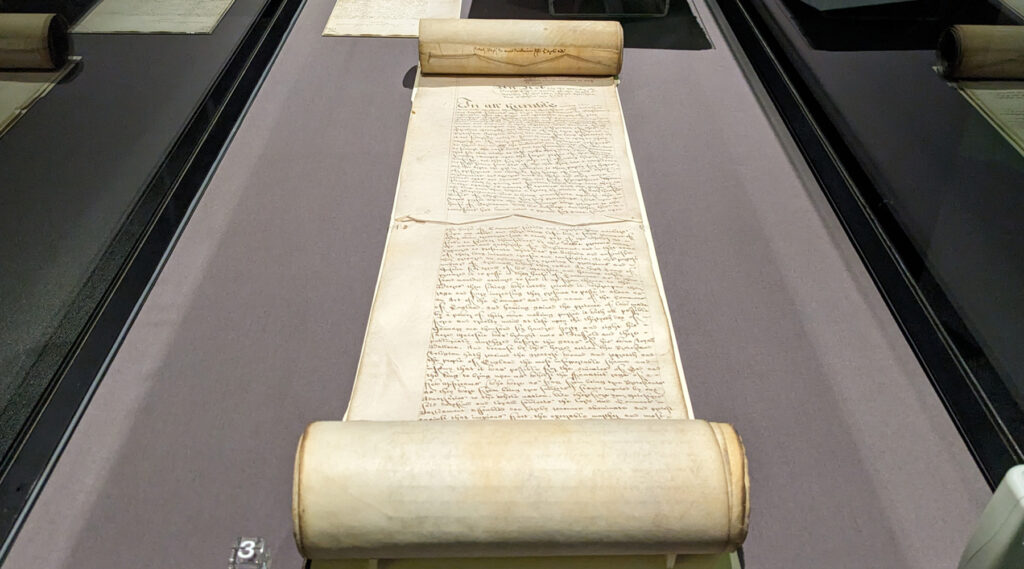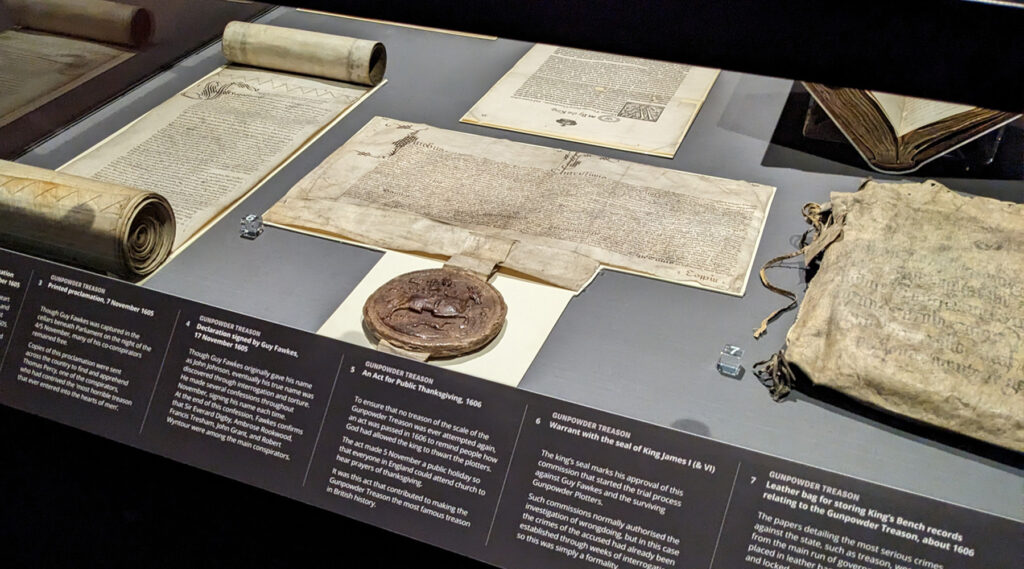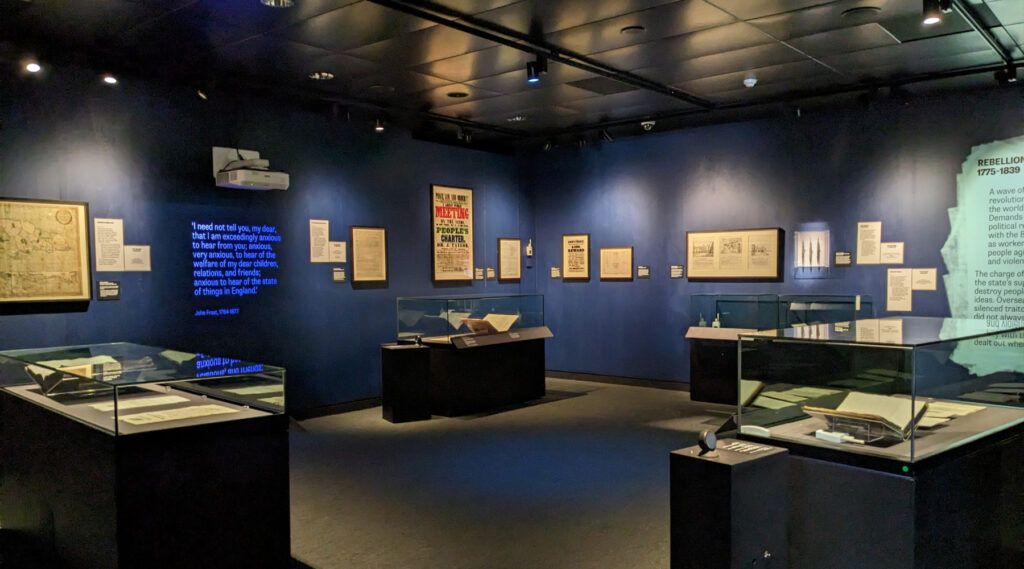An exhibition about the act of treason opens with a large vellum scroll that’s been partly unrolled. This is the document that in 1352 created the legal basis for treason, and over the centuries was to be used to put hundreds of people on trial, and at times, to death.
The treason act sometimes seems like an ancient law from times when people plotted to overthrow Kings, but the last time it was used in a prosecution was as recent as last year.
Treason is the topic of the current exhibition at the National Archives, and through its own government records that date back over 700 years, tells the story of how people were ensnared by the treason act.
As is famously said, history is written by the victors, and the treason act was nothing if not amenable to that. If you plotted to overthrow a government and lost, you were guilty of treason. If you won, then the former government was guilty of treason.
Two of the most famous treasons are here, reflecting the opposite sides of the coin. The gunpowder plot, where the conspirators lost, and the American War of Independence, where they won – which made enforcing a prosecution for treason somewhat difficult.
As an exhibition, it looks at some choice moments in history where the treason act has been used to prosecute the losers, and at times, how it has been amended to suit the changing times and paranoias, and language.
The Jamaican slave rebellion of 1831 is put down with language in public posters that very much reflected the attitudes of the time.
Some of the more visually impressive documents on show are the long scrolls, such as the 1660 Act of Attainder by King Charles II seeking revenge on the people who had killed his father. A long vellum scroll fills an entire case.
Quite what makes a crime treasonable seems to be rather fluid. In 1531, a man charged with murder for poisoning two people was put on trial for treason after King Henry VIII who was paranoid about being poisoned himself changed the treason act to include poisoning.
The murdered, Richard Roose was boiled alive as punishment.
Also don’t consult astrologers about the health of the King, as you get to go on trial if your horoscope is less back page of the Sun, and more treasonous.
Some of the documents show the changing attitudes to homosexuality, as Roger Casement of the Irish Easter Rising was subjected to psychological tests to determine his mental state — because he was suspected to be gay. The government for once, was keen that someone would be found to be gay, because the alternative would be insanity, and hence no trial would have been possible.
The last person to be executed for treason was William Joyce, aka, Lord Haw-Haw, who was a Nazi propagandist during WWII. He had argued after the war that he wasn’t British so couldn’t be tried for treason, but the government found that he had fraudulently acquired a British passport, and decided that was grounds enough to try him.
The exhibition includes that awkward document used by Joyce to renew his passport, and which would send him to the hangman’s noose.
The exhibition is packed full of documents like this, and while undeniably many of them are a struggle to read – either being handwritten in florid style or simply being so old they are in Latin — to see the very documents that sent Guy Fawkes to the gallows, or documents prosecuting the Regicides is quite something.
It’s very bite-sized about each act of treason, as arguably you could fill entire exhibitions about each one in turn, but it’s likely that most people will learn about some aspect of seditious attempts on the authority of governments.
It’ll be interesting to ponder how many of us wander out of the exhibition with sympathies for the traitors.
The exhibition, Treason: People, Power & Plot is at the National Archives until 6th April.
It’s free to visit and is open Mon-Sat. The National Archives is about a 10 minute walk from Kew Gardens tube station.

